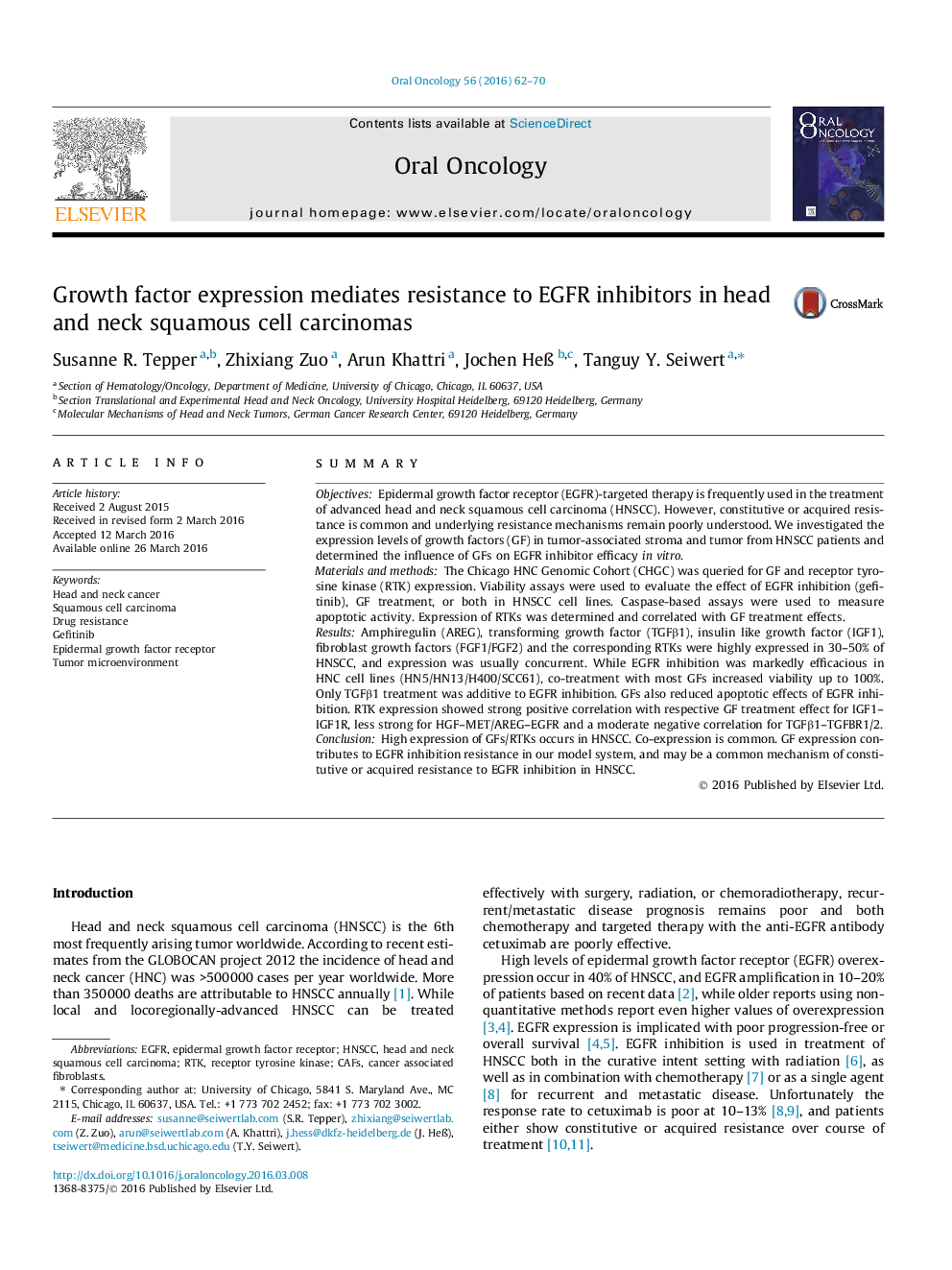| کد مقاله | کد نشریه | سال انتشار | مقاله انگلیسی | نسخه تمام متن |
|---|---|---|---|---|
| 3163863 | 1586254 | 2016 | 9 صفحه PDF | دانلود رایگان |

• Gefitinib treatment reduces viability in HN5, HN13, SCC61 and H400 HNSCC cell lines.
• AREG, HGF, TGFβ1, IGF1, FGF1 or FGF2 impair response of tumor cells to gefitinib.
• Gefitinib induces and growth factors diminish basal apoptosis in HNSCC tumor cells.
• Growth factor (GF) combinations have higher impact on viability than single GFs.
• Receptor expression indicates the extent of accordant ligands’ effect on viability.
SummaryObjectivesEpidermal growth factor receptor (EGFR)-targeted therapy is frequently used in the treatment of advanced head and neck squamous cell carcinoma (HNSCC). However, constitutive or acquired resistance is common and underlying resistance mechanisms remain poorly understood. We investigated the expression levels of growth factors (GF) in tumor-associated stroma and tumor from HNSCC patients and determined the influence of GFs on EGFR inhibitor efficacy in vitro.Materials and methodsThe Chicago HNC Genomic Cohort (CHGC) was queried for GF and receptor tyrosine kinase (RTK) expression. Viability assays were used to evaluate the effect of EGFR inhibition (gefitinib), GF treatment, or both in HNSCC cell lines. Caspase-based assays were used to measure apoptotic activity. Expression of RTKs was determined and correlated with GF treatment effects.ResultsAmphiregulin (AREG), transforming growth factor (TGFβ1), insulin like growth factor (IGF1), fibroblast growth factors (FGF1/FGF2) and the corresponding RTKs were highly expressed in 30–50% of HNSCC, and expression was usually concurrent. While EGFR inhibition was markedly efficacious in HNC cell lines (HN5/HN13/H400/SCC61), co-treatment with most GFs increased viability up to 100%. Only TGFβ1 treatment was additive to EGFR inhibition. GFs also reduced apoptotic effects of EGFR inhibition. RTK expression showed strong positive correlation with respective GF treatment effect for IGF1–IGF1R, less strong for HGF–MET/AREG–EGFR and a moderate negative correlation for TGFβ1–TGFBR1/2.ConclusionHigh expression of GFs/RTKs occurs in HNSCC. Co-expression is common. GF expression contributes to EGFR inhibition resistance in our model system, and may be a common mechanism of constitutive or acquired resistance to EGFR inhibition in HNSCC.
Journal: Oral Oncology - Volume 56, May 2016, Pages 62–70